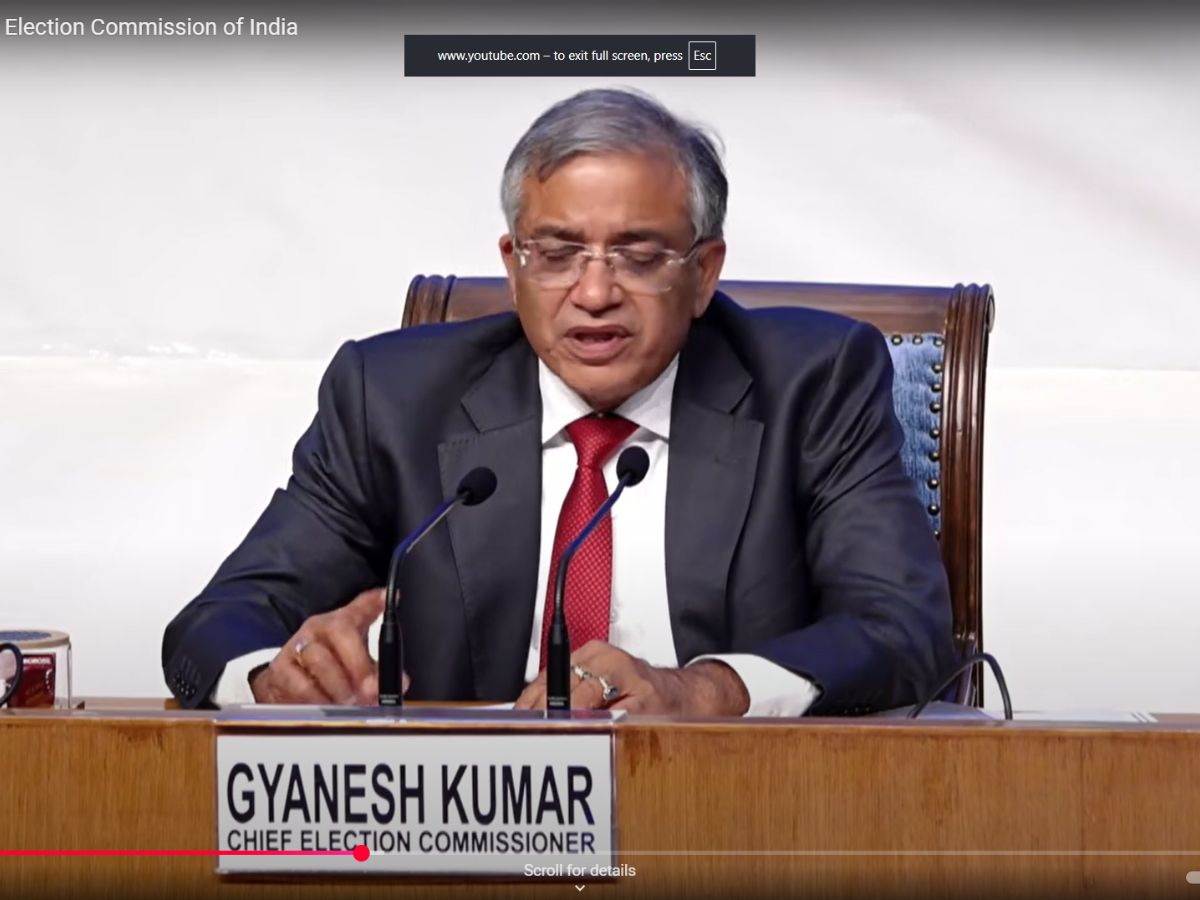Amid the ongoing allegations of ‘vote theft,’ the Opposition INDIA bloc is planning to move an impeachment motion against Chief Election Commissioner (CEC) Gyanesh Kumar during the Monsoon session of Parliament, said sources. The move will escalate the confrontation between the Opposition and the Election Commission.
Yesterday, Rahul Gandhi again accused the poll body of large-scale voter fraud during the launch of the Voter Adhikar Rally in Sasaram, Bihar. However, at a press conference in Delhi, Chief Election Commissioner Gyanesh Kumar rebutted these allegations, saying that in such a transparent process, it would even be possible for any voter to steal votes.
As per the ANI report, Congress Rajya Sabha MP Syed Naseer Hussain said that the party is ready to use all democratic tools, including an impeachment motion if needed, though no formal discussions have taken place. “If there is a need, we will use all the weapons of democracy under the rules. We have not had any discussions (about impeachment) as of now, but if needed, we can do anything, “he said.
A day earlier, Chief Election Commissioner Gyanesh Kumar said, “During the Lok Sabha elections, over one crore employees, more than 10 lakh booth-level agents, and over 20 lakh polling agents of candidates work for the electoral process. In such a transparent process, it would even be possible for any voter to steal votes.”
Taking a veiled dig at Rahul Gandhi, the CEC further said it is mandatory to submit a “Constitution oath” as a witness if he is not a voter of the constituency the complaint is being made. The Election Commission also asked Rahul Gandhi to either submit an affidavit within seven days or apologise for his allegations.
Process To Impeach Chief Election Commissioner
Article 324 (5) mandates the process of the Chief Election Commissioner’s removal. It states, “The Chief Election Commissioner will be removed from his office only on the like grounds as a Judge of the Supreme Court.”
However, it also provided that any other Election Commissioner or a Regional Commissioner shall not be removed from office except on the recommendation of the Chief Election Commissioner. Election Commissioners have a tenure of six years, or up to the age of 65 years, whichever is earlier.
What Is The Process Of a Judge’s Removal?
In layman’s terms, impeachment refers to the parliamentary proceedings to examine the alleged misconduct or incapacity of a sitting judge and recommend his/her removal to the President.
Articles 124 and 217 of the Constitution of India explain the process of impeachment for the sitting judges of the Supreme Court and the High Court, respectively. A detailed procedure is given under the Judges Inquiry Act 1968.
Steps To Be Taken To Impeach A Judge, Similar For CEC’s Removal
The procedure for the impeachment is given in the Judges’ Inquiry Act 1968.
1. To initiate the procedure, a motion can be introduced in either house of Parliament. The condition is that it must be signed by at least 100 members, if it is introduced in the Lok Sabha and by at least 50 members, if it is introduced in the Rajya Sabha.
2. Then the motion, on the grounds for impeaching the judge, is introduced in the House, where it is signed.
3. Following this, a detailed inquiry is done by a three-member committee against the alleged misconduct or incapacity of the judge.
4. Once the inquiry is done, the report is submitted to both Houses of Parliament for discussion and voting. Notably, the resolution must be passed by a ‘Special Majority’ which mandates (a) a majority of the total members of each house and (b)a 2/3rd majority of the members present and voting in each of the houses.
5. After the impeachment resolution is passed in both houses, the judge is officially removed by the President.
ALSO READ: EC To Rahul Gandhi: 7-Day Ultimatum In Vote Theft Case, Asked To Submit Data Or Apologise







